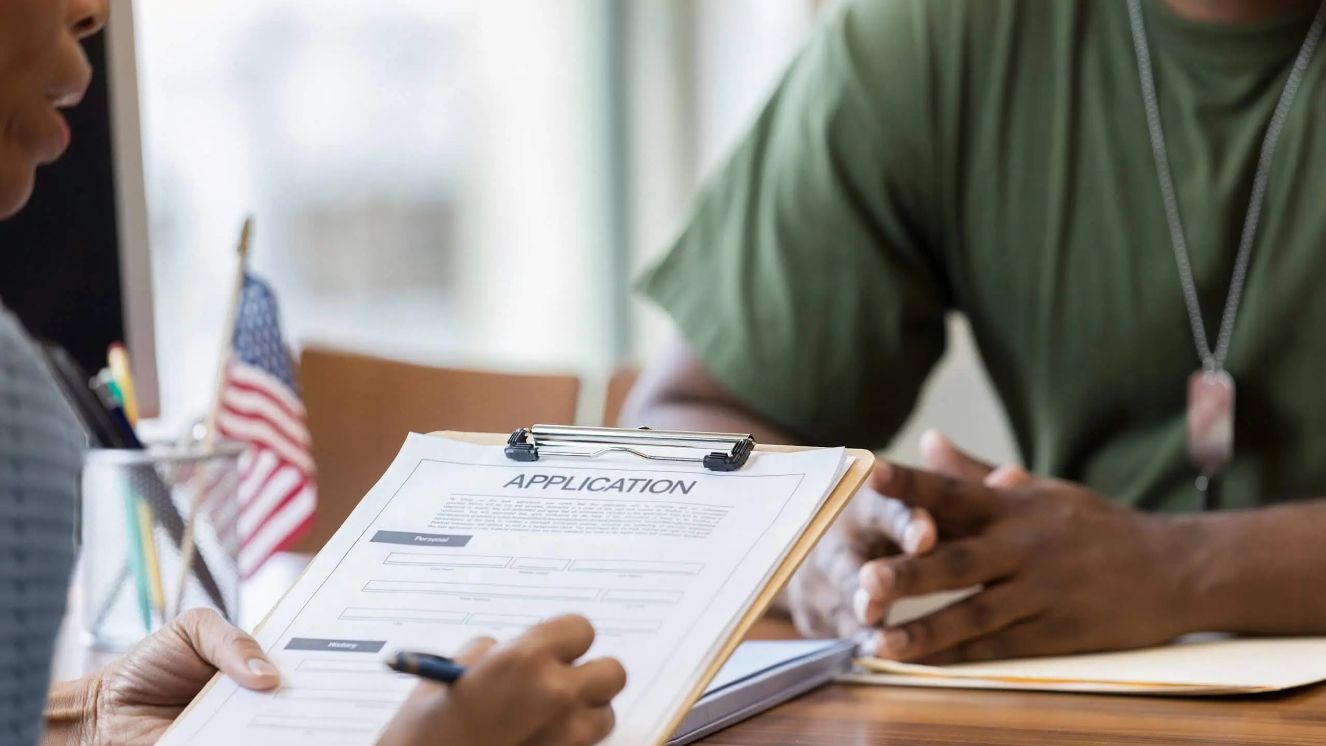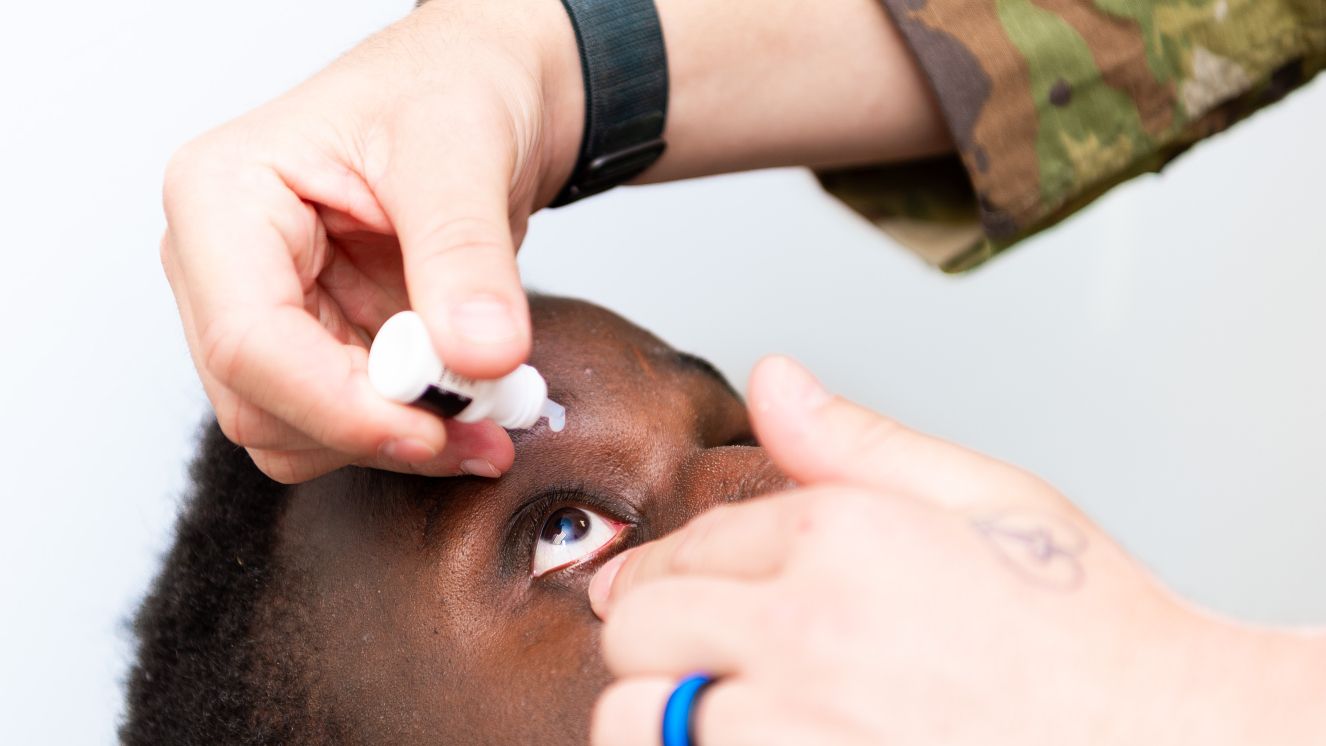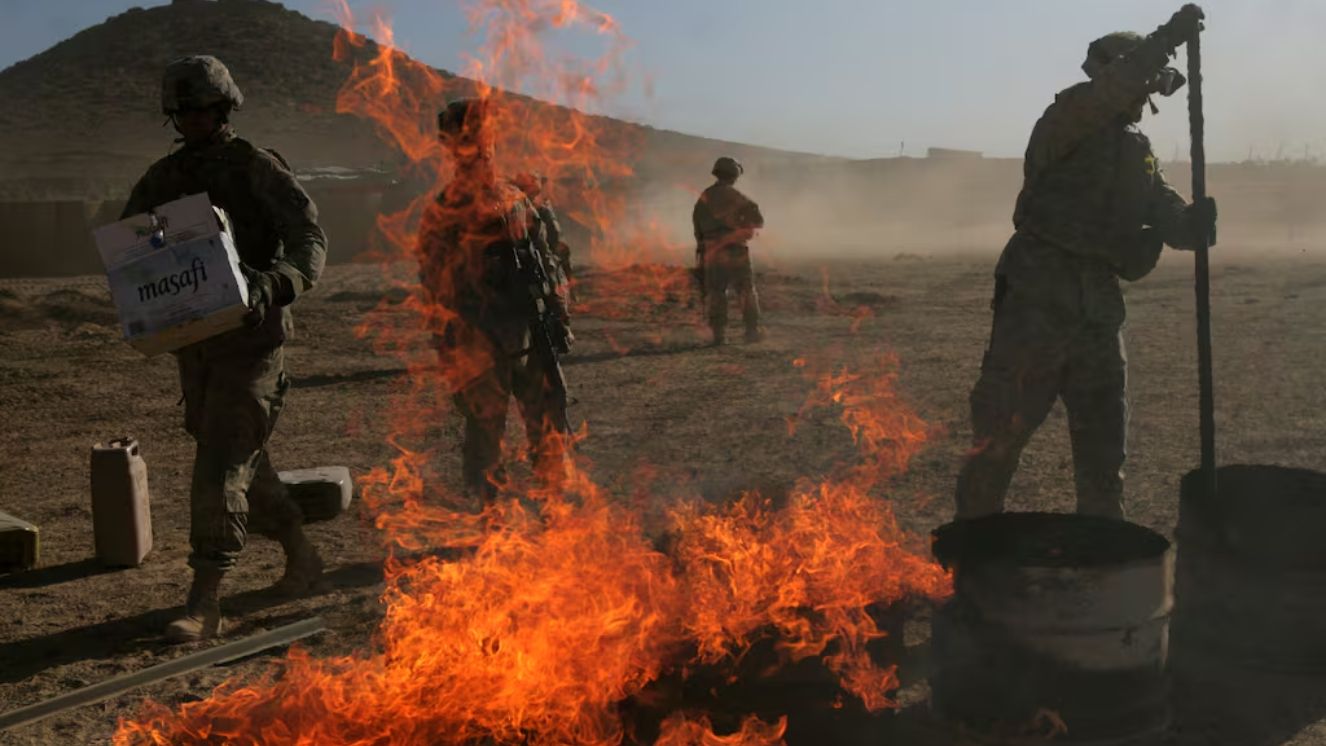MEDITATION FOR VETERANS: EASING PTSD SYMPTOMS

As Veterans, we have willingly risked our lives to defend and protect our country, often experiencing some of the most intense moments of our lives during this time. Upon returning to civilian life, we often experience mental health challenges, which include PTSD and depression.
As a Veteran myself, I have struggled with PTSD for years. It was actually my mom who told me about a study she saw where Veterans used meditation to help manage their PTSD symptoms. To me, meditation seemed like a crazy thing that people did. I didn’t see how meditation could help me in my current struggles of losing control of my mind and getting caught up in challenging emotions.
Even though I was skeptical, it didn’t deter me from trying it out. I was desperate for some way to handle my emotions. While years later I also attended therapy to deal with the emotions from my deployment to Afghanistan, the tools I learned in mediation helped me. Eventually, I learned how to use the power of meditation in my daily life. Meditation had a profound impact on my life, and I would like to share some meditation techniques and tools that I personally found helpful.
Meditation Techniques: An Overview
Before I share some of the techniques I learned, I first want to talk about the practice of meditation, and how it is used.
Meditation is a practice that has been used for thousands of years. If you do a little deep dive into its history, you’ll find that there are different forms of meditation, some that we commonly use today.
But, a simple definition of meditation is the practice of clearing your mind and bringing your mind back to focus using both mental and physical techniques.
Meditation has benefits for brain health and overall well-being. However, there is still a lot of research being done on why meditation is such a useful tool in so many different aspects of daily life. But what researchers do know is that meditation can help relieve stress, reduce anxiety, and help with other aspects of life. Some people even use it in daily life to help create new habits or break old ones, such as quitting tobacco.
For those experiencing PTSD, meditative practices have been linked to a decrease in hyperarousal, depression and insomnia.

Guided Meditation Practices for Beginners
A Marine Veteran recently told me when we were having a discussion about PTSD and the benefits of meditation, “I can’t meditate. I always get distracted.” I have lost count of the number of times I have heard this.
But here is a little secret about meditation. You can’t do it wrong. Getting distracted is part of the practice. Meditation practice has a crucial word in it. Practice. You are working to train your mind to catch itself from wandering and staying focused.
Getting distracted just means you are human. There can be a lot of pressure to do things “right.” Leaving people afraid to meditate because they worry they will do it wrong, but the truth is you never can do it wrong. Celebrate when your mind wanders and you get distracted and lose focus because that is when you can pull yourself back to the practice.
That ability to pull yourself back and out of your distracting thoughts is the muscle you can use to help you when you are struggling with PTSD symptoms.
Types of Meditation for Veterans
Here are the main types of meditation practices:
- Mindfulness Meditations: Focusing on the present moment, observing without feelings or judgement.
- Love and Kindness Meditation: Cultivating feelings of compassion and good toward others and oneself.
- Transcendental Meditation: Mantra based practice used to help settle the mind.
- Mantram Repetition Program: Repeat a chosen word or phrase to promote retaliation and focus.
- Compassion Meditation: Focusing on developing feelings of warmth and love for oneself or others.
- Sleep Meditation: Various practices to help one settle their mind either before bed or to fall asleep too.
Meditation can be guided or done on your own. For beginners, it is great to start with guided meditation. There are a number of apps that provide free guided meditations.
Group meditation is also a great way to get started. It can build a sense of community and help hold you accountable. Many VA hospitals provide group meditation classes.
Meditation, while typically done as a set practice in a quiet place, is also a practice that can be done anywhere doing almost any activity; driving, exercising, doing yardwork, etc.
Meditation Tools for Veterans with PTSD
Many of us can relate to my friend’s experience of not being able to stay focused. Luckily, there are additional tools that you can use when meditating that can help keep you focused. Especially when dealing with challenging emotions from PTSD. Below are some tools that I have found to be especially helpful.
Grounding
Grounding is my favorite tool to use. Grounding is helping to bring you back to the present moment typically by using the five senses.
For me, when I can feel my body reacting and triggering me, I focus on the five senses to help me stay present and not lose control.
I have found I typically get stuck on something I can see or feel, and then I shift from grounding to meditation. I often focus on one of the five senses to ground myself. Meditation, along with grounding, helps me to stay in the present moment and not spin out of control.
Breath Work
Breath work is another useful tool I use coupled with meditation. While the practice of meditation generally has you breathe normally, some people find that including breath work in their meditation practice helps improve its effectiveness.
When you engage in breathwork meditation, you’ll intentionally change your breathing pattern while paying attention to how your body feels.
Breathwork can be especially helpful to deepen relaxation, improve focus, and unwind before going to bed for the night.
Journaling
The practice of journaling can be a powerful tool for stress management, providing one a safe space to process their emotions.
I have found journaling to be a very useful outlet, allowing me to go over my personal goals, and track my progress.
Journaling not only serves as an emotional release, but it can also help you to explore your emotions, making it easier to manage stress and anxiety, when you get bombarded by the hurdles that life throws your way.

Meditation Strategies for PTSD Management
Meditation is a practice, so the most useful way to use meditation to help manage PTSD symptoms is to practice regularly. This can be done at a certain time of the day, such as right when you wake up, before bed, or another set time.
Meditation can also be done when you feel your body being triggered by something either in your surroundings or in your body. For me, because of therapy, I can often notice when I am triggered. I can take these cues to help me prepare for situations I know I may be triggered by or as a response mechanism. Then, I am able to use meditation to help stay focused and not lose control.
Meditation gives you a peace you can’t really explain, if you practice regularly. If you get out of the habit of meditating regularly, you can actually feel the change in your body and mind.
Personalizing Meditation for Veterans' Needs
Meditation is not an easy practice. Even when you practice regularly, you can still find yourself losing focus. Some days you may feel that you are getting nowhere. Continually distracted and having to bring yourself back to focus on meditating. But, that does not mean that it isn’t working to help you strengthen your mind.
The Department of Veteran Affairs has a number of resource programs to help Veterans who are looking to learn about mindfulness and meditation. The VA has a Mantram Repetition Program (MRP) where more than 270 Veterans who participated in MRP found that practice lessened depression and other psychological symptoms. Be sure to check out the resources and programs that they offer.
Suggested reads:
BY AMANDA HUFFMAN
Air Force Veteran & Military Women Advocate at VeteranLife
Air Force Veteran
Amanda is an Air Force Veteran and Space Force spouse. She shares the stories of military women on her podcast, Women of the Military and is working to inspire the next generation of girls to join the military through her book A Girl's Guide to Military Service.
Credentials
Expertise
Amanda is an Air Force Veteran and Space Force spouse. She shares the stories of military women on her podcast, Women of the Military and is working to inspire the next generation of girls to join the military through her book A Girl's Guide to Military Service.



